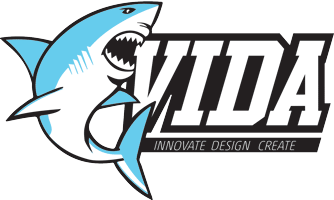It was a very grim day, when I began to notice the profound lack of empathy in education, particularly in public education. That story can be found here: Educational trauma is a term I coined to capture the lack of empathy I was noticing. It is the inadvertent perpetration and perpetuation of victimization by educational systems against consumers and producers of the system.
Victims of educational trauma may include: children, adolescents, and even adults interacting the educational system. This type of trauma can also impact communities spreading a sense of helplessness and feelings of dis-empowerment.
Several years of studying education, looking at different innovations and trying to bring certain technology-based innovations to education led me to design thinking, which I wrote about here. Design thinking captured my attention because empathy is one of the modes of the process. In this student-driven, human-centered, multi-disciplinary problem solving approach, empathy is not only a mode, but the essence of the process. Simply going through the steps of design thinking serves as a practice for cultivating empathy. Seung Chan Lim, author of Realizing Empathy, connected me with the empathy that exists at every step of the design process, in his TEDxPSU talk.
To my amazement and delight, there's a public school in Southern California integrating design thinking into their model. Dr. Eric Chagala's school, Vista Innovation and Design Academy (VIDA) is including school-wide design thinking challenges and utilizing aspects of the design thinking process to deliver a standards-based curriculum. Dr. Chagala told me his staff are demonstrating emerging creativity, complexity and courage, as they become designer educators. The truly amazing part of Dr. Chagala's design thinking school is that 32 percent of his students are homeless. The school is currently a depressed, Title I middle school that will close at the end of this year and reopen as VIDA in September 2014. If any school is in desperate need of an empathy makeover, it's Dr. Chagala's!
It struck me when Dr. Chagala said his teachers are most attracted to design thinking because of the empathy aspect. He explained that they are sensitized to the needs of students because they witness students suffering in devastating poverty everyday. Dr. Chagala helped me see that empathy could very well be the vehicle through which we reach those who are suffering from educational trauma. Despite the profound lack of empathy I've witnessed in public education, Dr. Chagala and his staff may reflect a major tide change currently taking place in public education. The willingness of teachers, and their leaders, to place empathy at the top of the priority list for students signals forward movement in the way students are educated in America.
"I believe empathy is the most essential quality of civilization." -- Roger Ebert
To support the movement of empathic education, my non-profit organization
The Connect Group, executed a Worldwide Empathy Toy Giveaway. Educators around the world received a free empathy toy from 21 Toys to support the inclusion of empathy in modern pedagogy. The campaign for empathic education continues with self-organizing, self-sustaining, learning communities. The Connect Group School is a tuition-free private school where students use design thinking to create their very own educational pathway. Finally, The Connect Group enjoys collaboration and reciprocal support with VIDA, as design thinking and empathy find their way into K-12 education.

